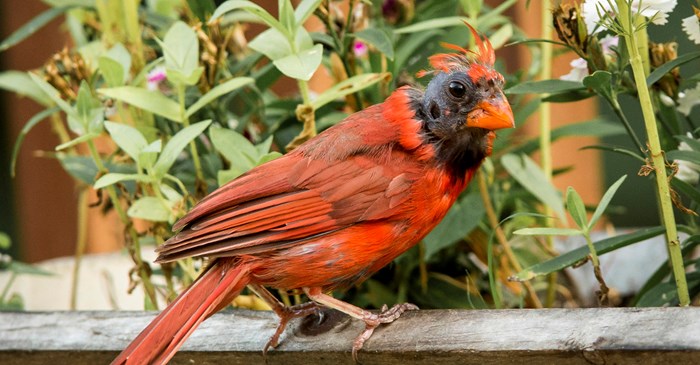We think of songbirds as blissfully free of problems that plague humans, but it turns out that baldness is not one of them. Yes, you just might spot a bird landing on your feeder without any head feathers whatsoever. This gives them a rather odd appearance. It can also be disconcerting, because it leads one to think the bird was ill or had survived some kind of attack.
It turns out that bird baldness is pretty common in Blue Jays and Northern Cardinals. What makes it seem uncommon is their baldness is short-lived. When it happens, they are not bald for long. Unlike humans, avian baldness is not a sign of growing older; they go bald for entirely different reasons.
Birds molt — that is, they shed their feathers and grow a fresh new healthy set to replace the old, battered ones. Molting patterns vary from species to species, so while some molt only once a year, others molt twice to prepare for migration or seasonal fluctuations.
In the late summer and into autumn, Blue Jays and Cardinals may drop all or most of their head feathers. In that case, you will see feathers begin to return in just a few days. Other songbird species usually don’t go bald during a molt because feather replacement is staggered. If it happens, the bird could be experiencing an abnormal molt, or could be plagued with feather mites, lice or nutritional issues.
In any case, molting requires a big expenditure of energy. Attract Cardinals and Blue Jays to your feeder with Lyric Cardinal Premium Sunflower and Safflower Wild Bird Mix. It has plenty of those high-protein nuggets they need to stay fueled and nourished, including Black Oil Sunflower Seed, Safflower Seed, Black Striped Sunflower and Sunflower Kernels.
